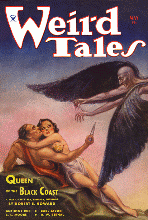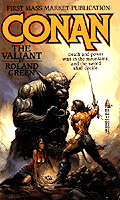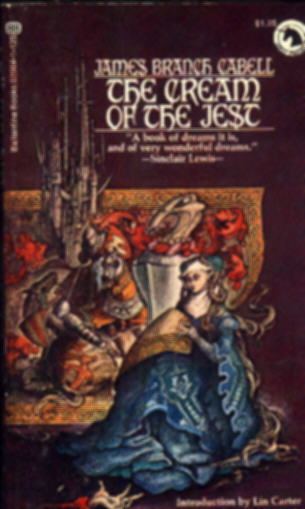G. W. Thomas
Presents
THE KINGS
OF THE NIGHT
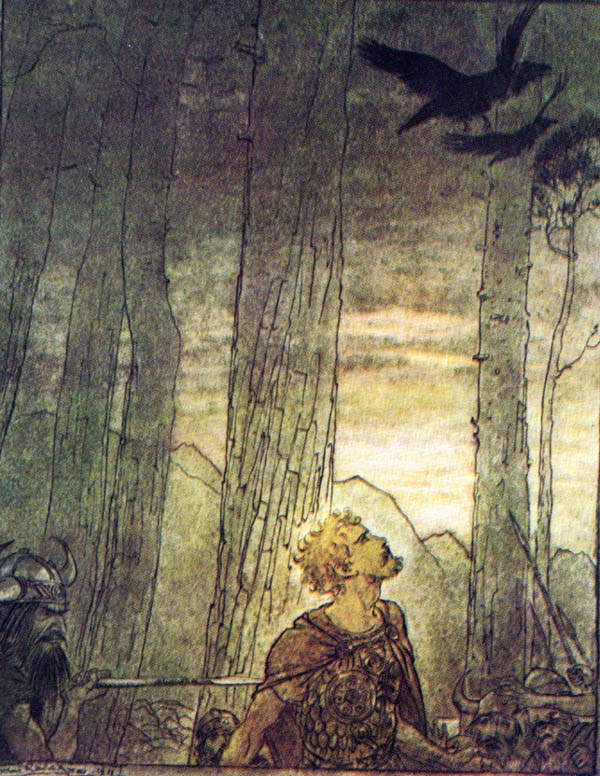
A Brief History of Sword
& Sorcery
by G. W. Thomas
G. W. Thomas
Presents
THE KINGS
OF THE NIGHT

A Brief History of Sword
& Sorcery
by G. W. Thomas
So, What the Heck Did You Think It Was Made Of?
This website is dedicated to a sub-genre of fantasy called “Sword & Sorcery”, a title coined by Fritz Leiber around 1939. S&S (as we refer to Sword & Sorcery throughout this book) is an action-oriented style of fantasy fiction which differs from other fantasies in several ways—though it has become difficult to tell in today’s book market.
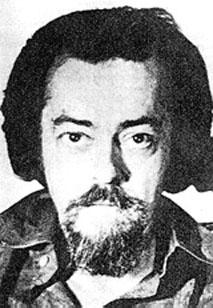
LIN CARTER
Lin Carter offers this definition as the Mission Statement of S. A. G. A. (The Sword and Sorcerers Guild of America), a loosely formed group of writers who—besides giving each other ridiculous titles like “The Purple Druid of the Glibbering Horde of the Slime Pits of Zugthakya”—promoted S&S widely in the late 1960s and early 1970s. Carter states in the introduction of Flashing Swords #1:
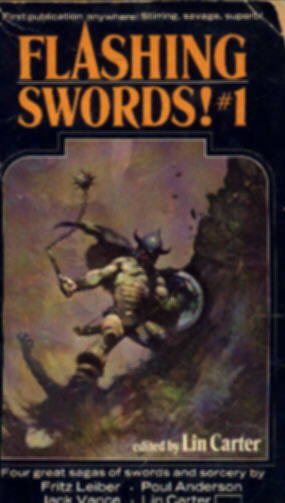

FLASHING SWORDS 1 & 2
...We call a story Sword & Sorcery when it is an action tale, derived from the traditions of the pulp magazine adventure story, set in a land or age or world of the author’s invention—a milieu in which magic actually works and the gods are real—and a story, moreover, which pits a stalwart warior in direct conflict with the forces of supernatural evil.
Finding the distinct line between high
fantasy (ie: the kin of Tolkien) and S&S is often impossible if we
look only at the trappings of the story. With the exception of being a
pulp-based literature, Carter’s definition could describe Frodo, who pits
himself stalwartly against the forces of the Dark Lord. The true difference
between other types of fantasy fiction and S&S is really a matter of
tonality. Their ingredients are often identical, only the way in which
they are mixed differs. S&S is most often a genre of action, of fever-pitched
excitement which usually leaves the background and characters less well
defined. High fantasy, which takes its inspiration from the English writers:
Tolkien, Lewis, Macdonald, Morris, etc. has a more leisurely pace, filled
with description and depth. Traditional S&S very often begins with
a fight and doesn’t stop until the bad guys are lying in a heap of their
own entrails.
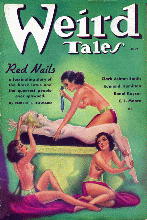
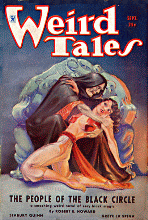
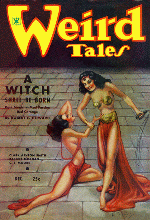
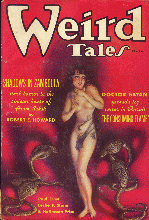

CONAN IN WEIRD TALES
This is its pulp heritage. The cheap magazines of the 1920s–1950s didn’t care for long artistic flourishes. If the reader wasn’t hooked by the second or third sentence, then forget it. One of the masters of this style of instant scene-setting was Robert E. Howard (1906-1936). Basing his prose style on writers like Jack London, Howard could start a story rolling in less than a paragraph. For example, from “The Lost Valley of Iskander”:
It was the stealthy clink of steel on stone that wakened Gordon. In the dim starlight a shadowy bulk loomed over him and something glinted in the lifted hand. Gordon went into action like a steel spring uncoiling. His left hand checked the descending wrist with its curved knife, and simultaneously he heaved upward and locked his right hand savagely on a hairy throat ...
Compare this fiery opening with the slow, gentle beginnings of The Lord of The Rings or Titus Groan and you will see what I mean. S&S has an immediacy, a sense of hurried excitement, that can’t wait a chapter or even a page for things to pick up. This is the power that made S&S an enduring variety of story-telling. Robert E. Howard (or REH as he will be referred to hereafter) created the first S&S characters: King Kull, Solomon Kane, Bran Mak Morn and, of course, Conan the Cimmerian. Exactly how Howard invented this new way of telling a fantasy tale needs a brief look. As with all writers, the influences are often the place to start. The story-tellers whom Howard read voraciously were:

• Harold Lamb wrote romantic biographies of ancient warlords like Ghengis Khan and Alexander the Great. Lamb provided REH with a love of history and pagentry. Howard was able to repay Lamb in an ironic way, when in the early 1980’s, several Lamb books were reprinted with the banner: “In the Tradition of Robert E. Howard...”
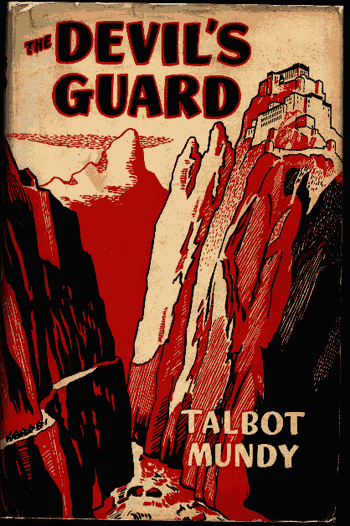
• Talbot Mundy penned adventure historicals for the earliest pulps at the turn of the century, offering exotic Oriental locales. Much of Howard’s knowledge of the East is derived from books by Mundy. Howard’s Francis Xavair Gordon stories are often simple pastiches of Mundy. But the most important Mundy character was Tros of Samothrace, the model for Bran Mak Morn.
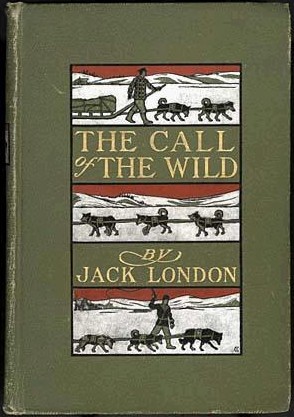
• Jack London was probably the greatest influence on REH, both artisitcally and philosophically. The San Franciso-based writer had a clipped, easy prose style which Howard emulated to great effect. London’s tales of Darwinian survival in the North set many of Howard’s ideas about the nature of man and his concept of barbarism. London wrote early sf with a racist or socialist point of view. Though Howard never became a socialist (in Texas, I think not) he did agree with many of London’s ideas on race. London’s The Star Treader , features a man who lives many lives, and inspired the James Allison stories.
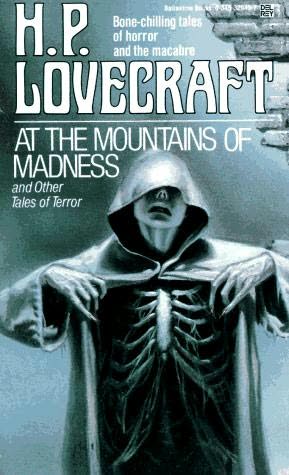
• H. P. Lovecraft was the second greatest influence on Howard, a fellow Weird Tales contributor and a correspondent of REH’s. Lovecraft’s Cthulhu Mythos helped to form the surpernatural background that lurks behind all of REH’s fantasy worlds. Howard wrote a dozen or so Mythos pastiches, adding to the collaborative mythology. But it is only when Howard mixed the heroic fantasy elements to his stories that they rise above the imitative. Lovecraft’s influence is often overlooked, but a crucial component of the burgeoning S&S genre.

• Sax Rohmer, author of the Fu Manchu novels, furthered Howard’s ideas about the Orient, Asians and their mysticism. Some of Howard’s earliest works are pastiches of Fu in the characters of Erlik Khan and Cathulos, aka Skull-Face. It is likely Howard picked Rohmer as a model because of his wide popularity. Howard was determined to succeed and chose his models accordingly.
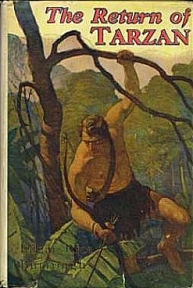
• Edgar Rice Burroughs was another such model. Another early REH attempt, Almuric is indebted to ERB. As with Rohmer, Burroughs was selected because of publishing success not philosophy.
The end result of this mixture of historical romance, Darwinian Survivalism, successful pulp formula and cosmic horror is Sword & Sorcery. These different authors, through the medium of Howard, all contributed some important element to a genre that often defies simple definition. Howard never purposefully created S&S. He just wrote stories that would sell. It is only in hindsight we see how S&S came into being.
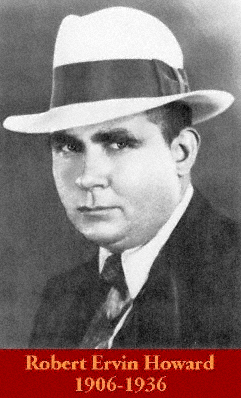
Howard wrote seriously for only eight
years. During that time he wrote in many different genres including western,
adventure, historical, fight stories, weird menace, spicy adventure and
horror, working fast and loose and without artistic prejudice. He was a
young man in the depths of the Great Depression, writing for money. During
that short span he wrote hundreds of pieces, some revered, others forgotten.
But of it all, his S&S is best remembered, widely read, the source
of books, comics, films and cartoons. All this success happened after Howard’s
suicide in 1936. A sad end for a writer who held so much promise.
Imitation Is the Sincerest Form ...
The death of Robert E. Howard in 1936 heralded an end to the greatest days of Weird Tales. H. P. Lovecraft would die a year later, and Clark Ashton Smith—the other third of that mighty threesome—would retire from active writing in 1938, even though he lived until 1961. Weird Tales lost its three greatest writers in little over three years.
But imitators, disciples and friends of these men would take over from where their comrades left off. To name a few who emulated Howard but kept their own vision were Nictzin Dyahlis, with fantasies like “The Sapphire Siren”, Seabury Quinn, author of the popular Jules de Grandin stories, with the Christmas tale “Roads” and C. L. Moore’s “The Black God’s Kiss” which started her Jirel of Joiry series.
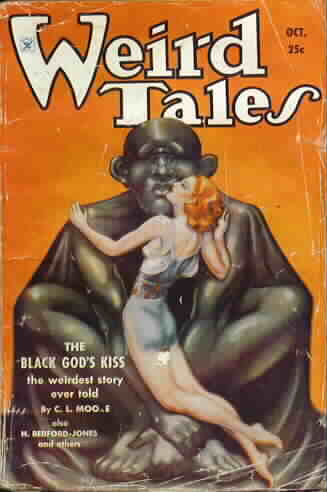
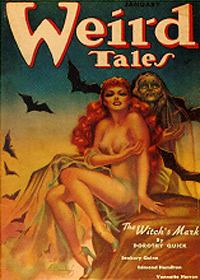
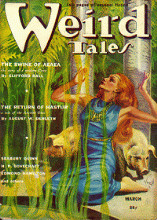
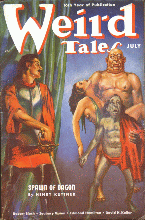
WEIRD TALES FEATURING C. L. MOORE, SEABURY QUINN, CLIFFORD BALL & HENRY KUTTNER
Two of the less well-remembered imitators
are Clifford Ball and Henry Kuttner. Clifford Ball pastiched Conan with
his “Duar the Accursed (1937). These middling tales are unknown to all
but collectors of the old magazines. Kuttner, whose Elak of Atlantis (1938)
bears a familial resemblance to Kull, is little better recalled, even though
Kuttner is reverred in sf circles for his classic stories like “Mimsey
Were the Borogoves” and “Housing Problem”, written with his wife, C. L.
Moore, under the pseudonym Lewis Padgett. The Elak and Duar tales differ
from those of other writer in Weird Tales being direct pastiches, the first
of their kind, but not the last as the 1960’s would prove.
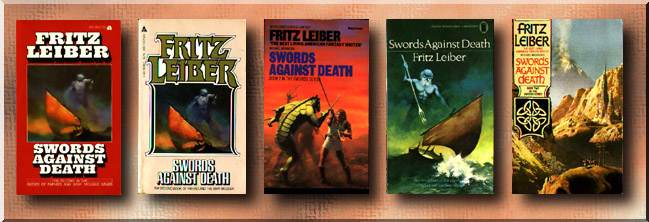
FRITZ LEIBER'S NEWHON
Another writer to carry the torch was Fritz Leiber, the man who gave S&S its name. In 1939, he began what has become one of the best series in all S&S, when he wrote “Two Sought Adventure” for Unknown, the fantasy sister magazine of John W. Campbell Jr.’s Astounding Science Fiction. “Two Sought Adventure” features two roguish swordsmen, Fafhrd, a red-haired barbarian ( a three-dimensional Conan) and Grey Mouser, a wizard’s apprentice-turned-thief, the two best swordsmen in Newhon. The two characters are heroic caricatures of Leiber and Harry Fischer (the creators of Lankhmar). “Two Sought Adventure” and the five stories that followed were not startlingly different from Howard or his imitators. Entertaining, well-written, they established the characters who in later decades would be featured in stories of much greater importance.
It is strange to think that the genre that
blossomed in Weird Tales lived less than twenty years, starting
perhaps in 1929 (with the first Kull story) to 1947 (with Leiber’s “Adept’s
Gambit” in Arkham House’s Night’s Dark Agents), withering without
Howard’s fierce energy to fuel it. By the end of World War II, the Hyborian
dreams were forgotten amidst technological sf of the 1950’s.
Gone But Not Forgotten
Sword & Sorcery seemed a forgotten
chapter in fantasy as World War II brought a new faith in technology and
changes in the publishing industry, lead by masters like Robert A. Heinlein.
Added to this change, the pulps —that birthing ground of S&S—were on
the wane. Weird Tales ceased publication in September of 1953,
along with its few competitors. Paperbacks and telelvision now dominated
the entertainment world.
During the three decades between
1936 and 1966, one group kept the fires burning. The Hyborian League was
a small but faithful group of Howard admirers. They published a small circulation
magazine called Amra (Conan’s name amongst the Corsairs, meaning
“Lion”). George R. Heap started and published Amra until 1959, when George
Scithers took over until its final issues in 1985. Scithers (along with
Darrell Schweitzer) revived Weird Tales in 1986.
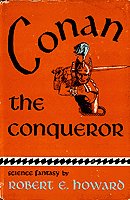
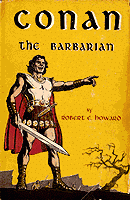
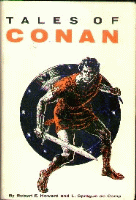
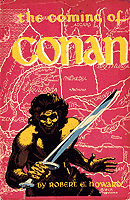
GNOME PRESS CONAN BOOKS
The Hyborian League’s faithful vigilance
gained some assistance in 1950, when Gnome Press published the hard cover
collection entitled, Conan the Conqueror, the first book to feature
Conan since Arkham House’s Skull-Face and Others (1946). Five more
Conan volumes followed between 1952 and 1955. These reprints sold well
enough but were largely unsuccessful in reviving an interest in S&S
or in the rest of Howard’s work. That was to happen in 1966 with Lancer’s
issuing of the Conan series in paperback.
Conan Gets a Face-Lift
What Glen Lord (originally a REH fan and later his literary agent) and Lancer proposed to do was repackage Conan, make the stories more cohesive as a saga, rather than the loose sampling Howard wrote. To do this, the publisher used a history of Conan written by Dr, John D. Clark and P. Schuyler Miller (published in 1938 and revised in 1959 for Amra), outlining Conan’s life and adventures. Howard had seen the schematic years earlier in a letter and had more or less agreed with it.



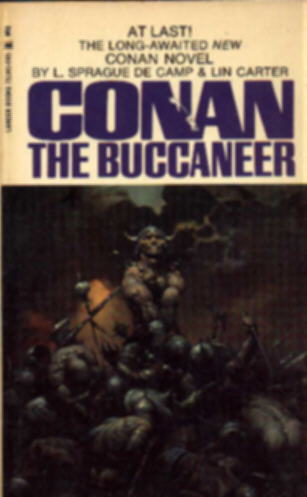
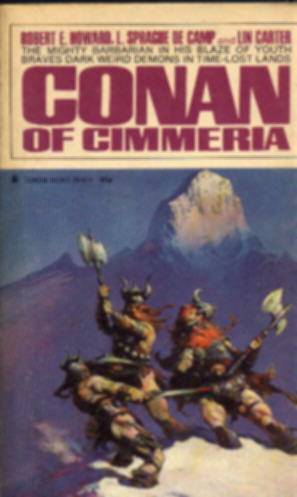
LANCER (AND LATER ACE ) CONAN PAPERBACKS
Lancer’s editors cut the essay into
segments, using them as introductions to the individual stories, and commissioned
L. Sprague de Camp to over-see the writing of pastiches to fill in the
gaps. Many Howard purists—such as the late Karl Edward Wagner—do not care
for the Clark-Miller outline or the new adventures. (Wagner edited some
of the original Howard stories sans introductions and pastiches in 1977
for Bekerley).
When I asked de Camp why he joined
in the Conan face-lift (1988) he said that Lancer was going to do it with
or without him, so he figured he might as well see the project completed
well. The pastiching process has continued without any significant break
even to this day with the latest series of Conan novels.
The Good, The Bad and the Ugly
Lancer’s republishing of the Conan books in 1966 hearlded in a virtual explosion of Sword & Sorcery, with good and bad results. Amongst the good was establishing of a genre which would never be forgotten. S&S was here to stay. The bad effect was the solidifying and “genrification” of that type of story to the point where hacks churned out imitations of imitations. The parodies were not far behind—numerous and vicious and often with good cause.
Still by 1969, many publishing houses such as Dell and Belmont had entire S&S lists. Many average novels were published under these banners. Writers like Ted White, Lin Carter and other young, new faces filled the shelves with Conan-esque heroes, fighting the forces of wizardry.
And the magazines were not far behind the book publishers. Fantastic, traditionally a place to publish semi-science fictional fantasy, with writers like Jack Vance and Fritz Leiber, filled its pages with charming and inventive fantasy tales. Under Cele Goldsmith, many of the 1960’s classics first appeared in the pages of Fantastic including the new Fafhrd and Grey Mouser stories.
As the 1960’s gave way to the 1970’s,
Fantastic,
under editor Ted White, served up S&S heroes long after the Lancer-born
craze had peaked. In the years between 1969 and 1981,
Fantastic
printed many worthy tales, like Avram Davidson’s Ursus of Ultima Thule,
L. Sprague de Camp’s The Fallible Fiend and Alexei & Cory Panshin’s
Earthmagic.
The magazine struggled along until the 1980’s when it combined with Amazing,
then was discontinued altogether. Shortly before this, Darrell Schweitezer
debuted with his excellent
The White Isle to inadequate praise.
Welcome to Carter Country
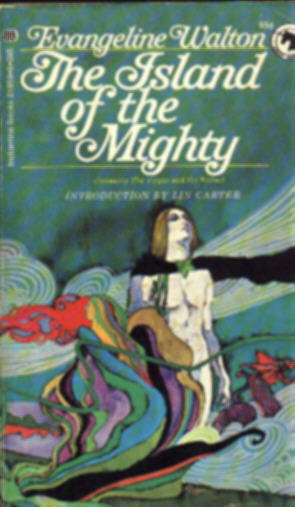

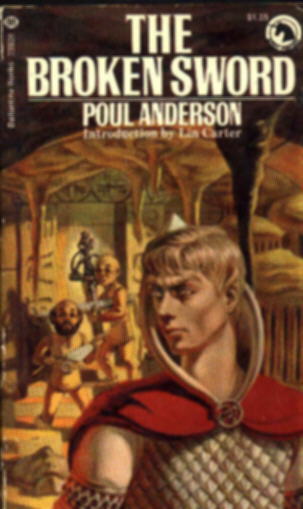
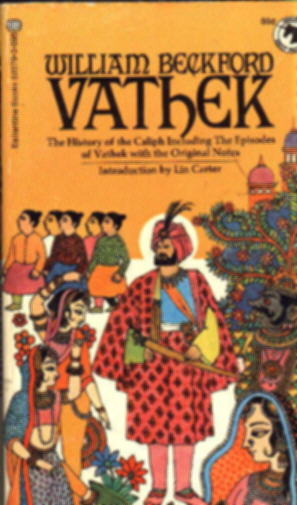
BALLANTINE ADULT FANTASY SERIES
Lin Carter, who was half of the de Camp & Carter team that re-introduced Conan to the world, did not stop with the Conan Pastiches of the late 1960’s. Carter spent the majority of his years between 1967 and 1971 writing S&S novels, some of which are better than others. More importantly, he spear-headed the biggest movement in fantasy popularity, starting with the publication of The Lord of the Rings and ending with the Unicorn colophon of the Ballantine Fantasy Series.
This series of reprints re-introduced many forgotten works including masters like Cabell, Dunsany and Peake, but also served up numerous anthologies featuring S&S short stories. Outside of these collections, the stories of Duar the Accursed and Elak of Atlantis were unheard of until 1985, when Elak got his own small circulation volume.
Along with the editing and introducing
of books, Carter also wrote novels like Lost World of Time and the
Thongor series. Both activities have helped to propel S&S to greater
popularity, and the wider reading of fantasy in general. (See
Appendix V for a complete listing of the Ballantine series).
Fritz of Newhon Returns
Fritz Leiber was not inactive during the 1960’s. He revived Fafhrd and Grey Mouser in 1959 with “Lean Times in Lakhmar”, a tale which takes a scathing view of organized religion. Story after story came from his pen during that decade, appearing in Fantastic, each more ingenious and poetic than the last. Here was not only the trappings of S&S but a deeper investigative concern. Stories like “The Bazaar of the Bizarre”(1963) examined Hollywood’s greedy, artless nature. “Stardock”(1965) and “The Snow Women”(1970) explored Fafhrd’s early years and relationship with his parents.
Still, Leiber’s greatest achievements
lie ahead. In 1970, he wrote the Hugo and Nebula Award winning, “Ill Met
in Lankhmar” which chronicles how the two best thieves in Lankhmar met.
Though not Leiber’s first Hugo or Nebula, it was S&S’s first. Not until
Gene Wolfe’s New Urth books would critics lavish so much praise on an
S&S tale.
Beginning in 1968, the Newhon stories
were collected in three volumes with two more in 1970 and another in 1978.
But 1988 brought a bitter-sweet end to the Newhon heroes, as Grey Mouser
dies (but gets rescued) in “The Mouser Goes Below”, the final story in
The Knight and Knave of Swords. Fritz Leiber himself passed away in 1992.
Four Color Barbarians
October 1970 brought another thrill to S&S fans. Marvel Comics began Conan the Barbarian, a four color comic drawn by Barry Smith. The original Smith issues are greatly valued today by collectors, especially #14 and #15 which featured a guest spot by Elric of Melnibone. Smith’s romantic style is often surprising for new fans who are more familiar with the later Conan. The Smith issues were reprinted in the late 1980s. Canadian comic artist, Dave Sim, parodied Smith’s style wonderfully in the first issues of Cerebus the Aardvark in 1977.
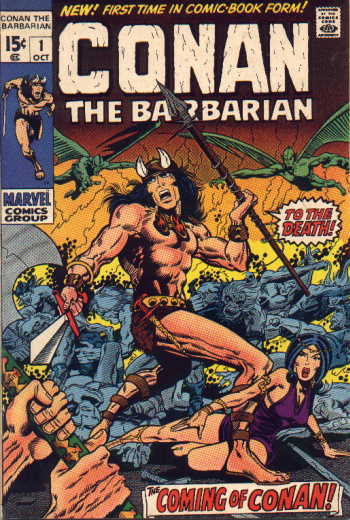
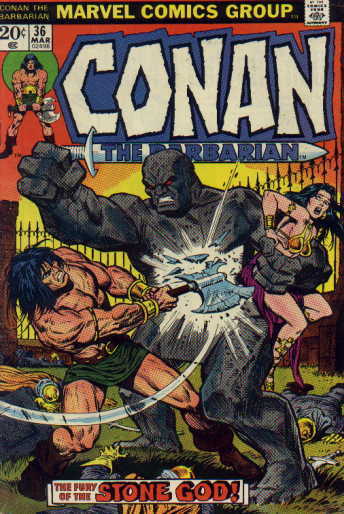
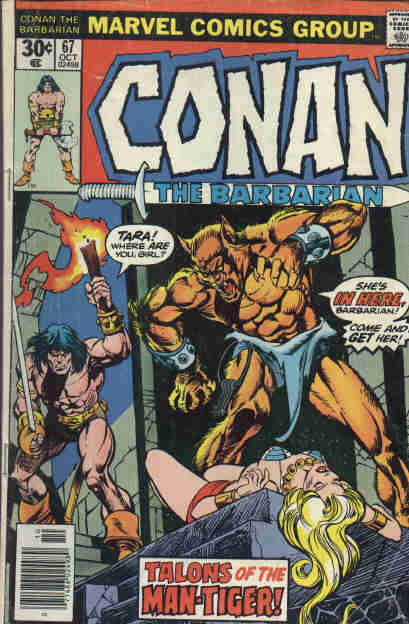

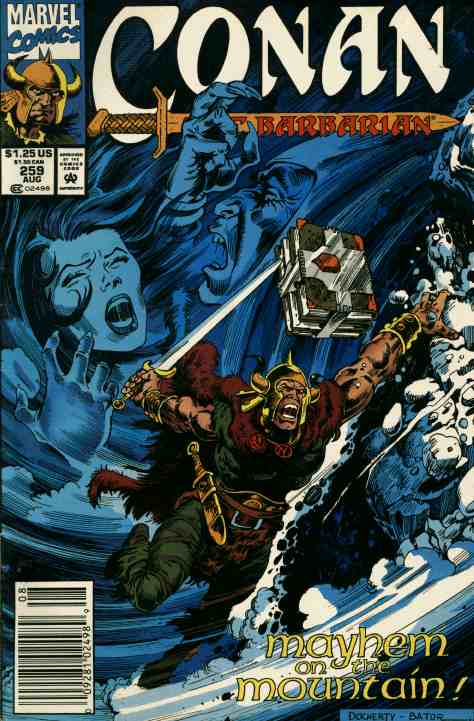
CONAN THE BARBARIAN COMICS
Barry Smith drew Conan for two years, leaving after #24. His replacement by John Buscema in April 1973 marked the beginning of a long partnership between John and Conan writer, Roy Thomas. Conan’s popularity would eventually establish a black & white magazine called The Savage Sword of Conan. Starting August 1974, it ended August 1995. Buscema left the magazine in the 1980’s after about a hundred issues. Tales of Conan’s years as King of Aquilonia were featured in King Conan/Conan the King, running for five years (1984-1989).

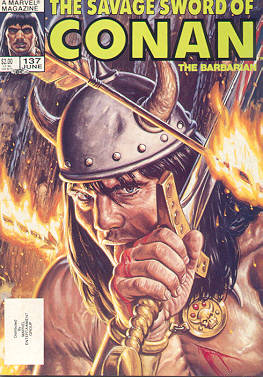
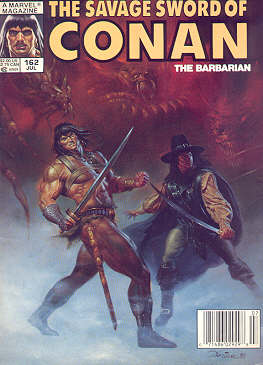
THE SAVAGE SWORD OF CONAN
The 1980’s saw a drop in the quality of the Conan books with Buscema then Thomas leaving for other projects. Roy Thomas penned fifty issues of Arak, Son of Thunder for DC. An excellent historical S&S series, critics dubbed it “Conan the Indian”. Even with the return of Thomas in the 1990s, Conan’s audience changed from the older readers to younger media-oriented readers, ending with the cancellation of Conan the Barbarian at issue #275. The Savage Sword survived a while longer, receiving the justified nick-name “The Same Old Sword of Gonad”. In the 1990's, Marvel attempted unsuccessfully to rebuild Conan’s reputation with two publications, a four color comic, simply titled, Conan, and a new black & white magazine, Conan the Savage.
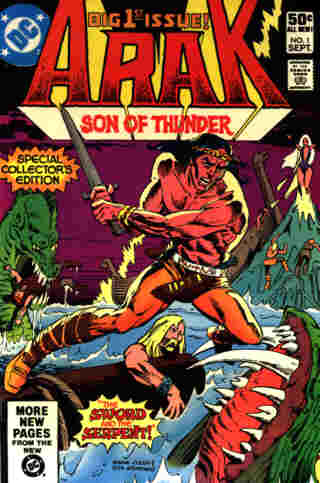

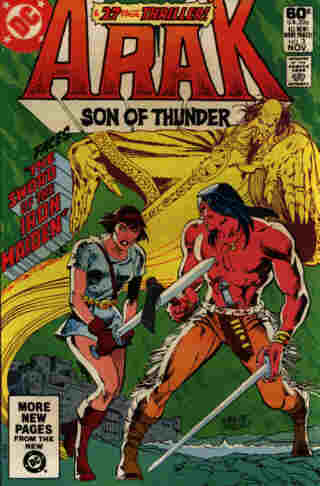
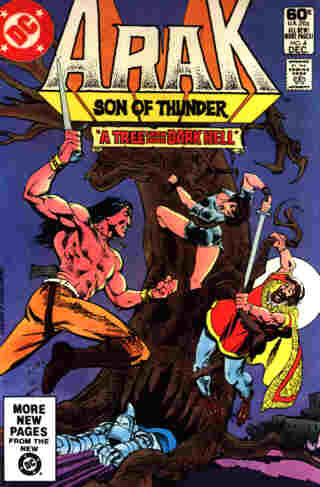

ARAK, SON OF THUNOR
Conan the Barbarian paved the way for other Howard characters. King Kull, Solomon Kane, Bran Mak Morn and Almuric have had their own titles, or made appearances in Marvel Comics. One character was created from the Howard comic boom, a deadly red-haired swordswoman, Red Sonja. The character is often attributed to R.E.H. but was actually created by Roy Thomas in February 1973, based on two Howard characters: Red Agnes (17th Century Frances) and Red Sonya (a female soldier fighting the Turks). The comic book Sonja is a Hyrkranian whose steel bikinis have become a low-water mark in fantasy art (especially under artist Frank Thorne who would later do an adult version of Sonja called Ghia). Sonja’s comic ran off and on through 1977 to 1986, with an awful movie adaptation featuring Brigitte Nielsen. The character was featured in a series of acceptable paperback pastiches in 1981-83, written by David C. Smith and Richard L. Tierney.

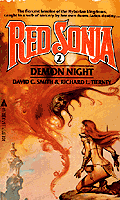
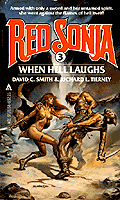
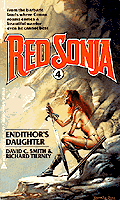
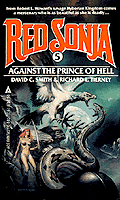
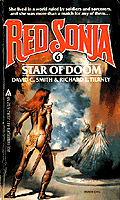
THE RED SONJA PAPERBACK SERIES BY SMITH & TIERNEY
The Howard comics spawned enthusiasm for many non-Howard titles. Fritz Leiber’s Fafhrd and Grey Mouser appeared in Sword of Sorcery (Feb-Mar–Nov-Dec 1973). Adaptations as well as new stories were used in the comic. Lin Carter’s Thongor of Lemuria ran in Creatures on the Loose #22-29 in 1973. Claw the Unconquered, DC’s Conan appeared in 1975 along with Beowulf in 1975-6 and the very successful The Warlord by Mike Grell. Grell left after a dozen issues but the series ran on the late 1980s. Arak of Thunor premiered in The Warlord and Claw the Unconquered came back for a few issues as a back-up feature. Mike Mignolia made his name in comics in the 1990s with his Lahkmar adaptaions of Fritz Leiber.
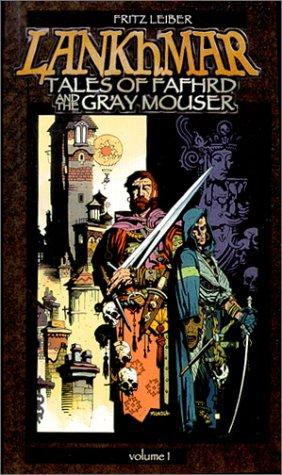
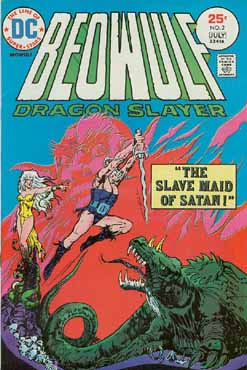
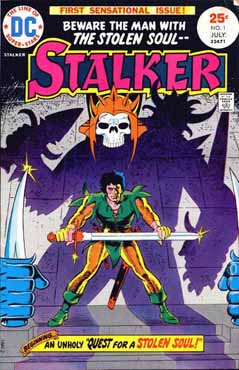
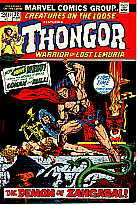

VARIOUS S&S TITLES
When Is a Duck Not a Duck?
The 1960s explosion of S&S was a two-edged sword. While it established S&S for all time, it also created a narrow idea of what the genre was capable of, immediately placing it in a literary ghetto. Some of the nastiest critics were sf writers like Larry Niven who parodied the traditional S&S tale with such brilliance in “Not Long Before the End”(1969, Fantasy & Science Fiction) in which we view the “swordsman against sorcerer” plot from the other way around.
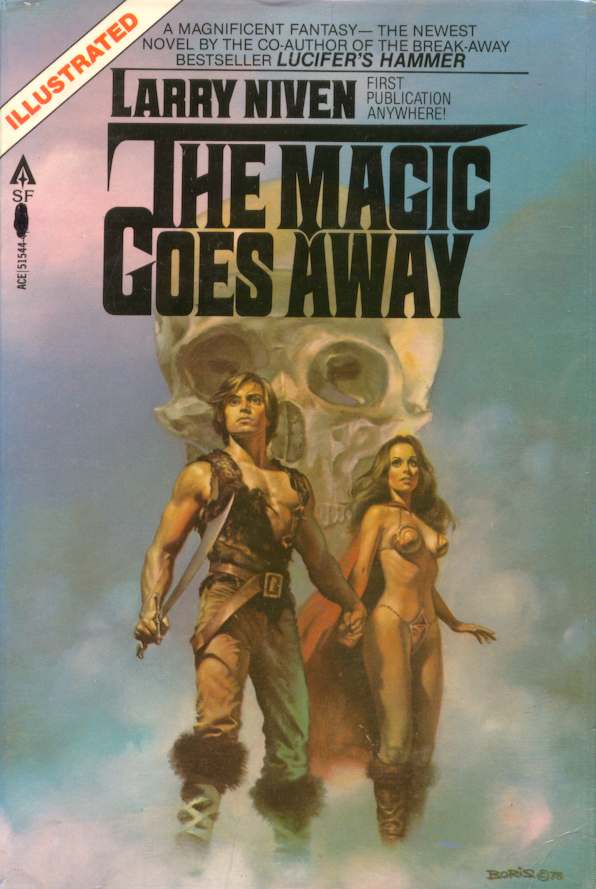
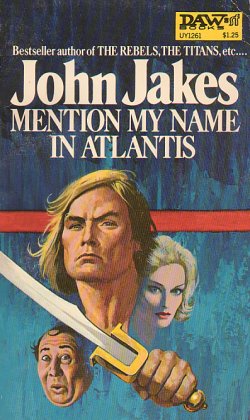
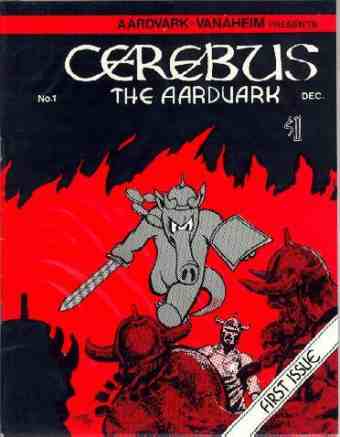
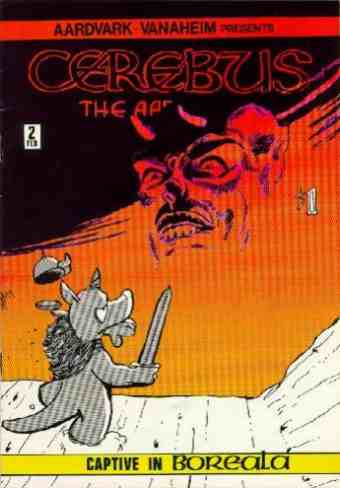
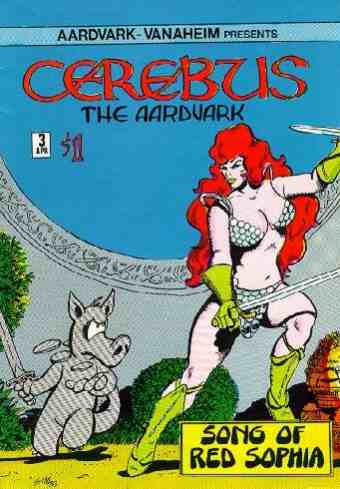
VARIOUS S&S PARODIES
In Niven’s story, an adept named Warlock must defend himself against a barbarian with a long ridiculous and in-joke-filled name (Belhap Sattlestone Wirdless ag Miracloat roo Cononson–Hap for short) who has found what he thinks is an enchanted sword. The weapon is actually a demon, which forces the man to kill for its pleasure. The barbarian has the usual idea of freeing a young damsel, Sharla, from the ancient magician’s clutches. In fact, Sharla is Warlock’s willing mate and has spurned Hap’s advances.
Warlock knows a secret, that the
fuel for magic “manna”, can be depleted like any natural resource. Warlock
prepares for Hap’s arrival by creating a spinning disk that eats all the
mana in a small area. When the barbarian comes, his sword reverts to its
demonic form. The swordsman is swift pray to Warlock’s ordinary blade.
Some critics, including Niven himself,
call the Warlock stories science fiction, not fantasy, because of the logic
of the magic and the undercurrent of concern about natural resources. I
say this is nit-picking, but whatever the case, the Warlock stories–three
stories and a novel–are excellent S&S. Their effect has been to encourage
new writers to stretch the bounds of S&S and to work within logical
guidelines.
The number of Conan parodies over the years could fill a library, with well-written ones like Poul Abderson’s “The Barbarian” and John Jales Mention My Name in Atlantis (being of the gentler variety) to sophomoric fanzines (that drip venom). Andrew Offutt began his own S&S career with a parody, The Black Wizard from the Black Castle (1976). Largely a reaction to the boom in the late 1960’s, novels like The Leopard of Poitain (1985) by Paul Garcia Capella demonstrate that even in recent years parodies are still being written and published.
Probably the best parodies of S&S
are found in the comic books. Dave Sim’s versions of Conan, Elric, Red
Sonja and Bran Mak Morn in Cerebus the Aardvark are clever but not
insulting. Bud Plant’s Killer Barbarian Funnies and Epic’s Samurai
Cat are more common and less effective.
Pate Du Conan
The late 1970’s and early 1980’s saw another boom in S&S, not only in reprintings of original novels but in new books written about successful characters. Pastiches about the established Howard characters were written by young writers like David C. Smith and Richard L. Tierney, as well as old hands like Poul Anderson and L. Sprague de Camp.
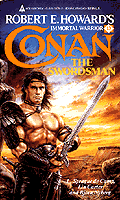
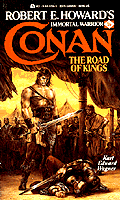
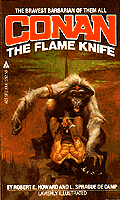


LATER CONAN VOLUMES
Even though several Conan novels were written at this time, the best pastiches were about other Howard characters: Bran Mak Morn and Cormac Mac Art. (Oddly, no Kull or Solomon Kane books were written.) Karl Edward Wagner’s The Legion From the Shadows (1976) concerned a historical puzzle, the disappearance of an entire Roman legion. Wagner plays with many threads: history, Howard’s original work and even some Cthulhu Mythos references, tying them all into an exciting and brooding novel.
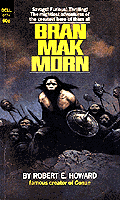
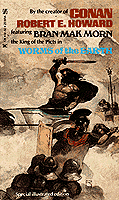
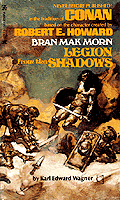
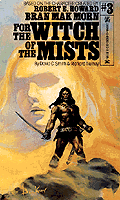
BRAN MAK MORN BOOKS
Another popular pastiche was Andrew Offutt’s Cormac Mac Art books. Offutt strays widely from Howard’s original collection of tales, The Tigers of the Sea, which features few overt supernatural elements, but focuses on battles in historical times. The Sword of the Gael (1975), Offutt’s first venture utilizes a branch of Irish mythology Howard never used. With The Sign of the Moonbow (1977), Offutt returns to Howard’s canon inducting Kull’s old villain, Thulsa Doom. This connection wasn’t entirely Offutt’s as Kull appears in the historical tale “Kings of the Night”. Later, Offutt, along with Keith Taylor, wrote two novels of Cormac’s early years.
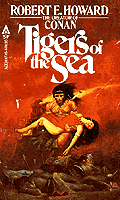
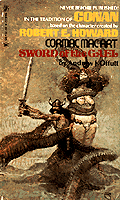
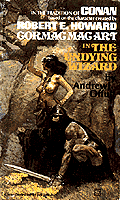

CORMAC ART BOOKS
The 1980’s gave a second chance to book publishers to create a long-running series of Conan books. The novels written by promising talents like Robert Jordan were repackaged with new novels by Leonard Carpenter, Steve Perry, John Maddox Roberts and Roland Green (of Wandor fame). These new books are the final resting place of Conan’s fame, a series character like The Executioner or The Destroyer, doing nothing to elevate S&S’s reputation but securing a popularity with a wider audience.


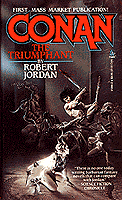


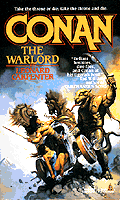
THE LATEST CONAN VOLUMES
The Silver Scream
The late 1970’s boom in pastiches and reprints peaked with interest in Hollywood. Conan the Barbarian (1982) starring Arnold Schwartzenegger brought a mish-mash of Conan tales as well as Kull’s nemesis, Thulsa Doom, to the screen. The film does little to dispell the “lunk-headed barbarian with the bimbo” clichés of early S&S. The sequel, Conan the Destroyer (1984) was, if possible, even worse, though it did include at least one good Lovecraftian beastie. Red Sonja (1985) is the last of the big productions, and made the two earler films look good.
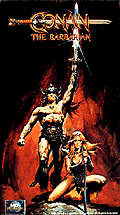
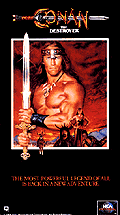
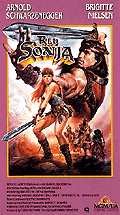
CONAN FILMS
But the worst was yet to come–on video. Films from all parts of the world featuring barbarians can be found in video stores, films that never graced the screens of theatres. The genre of the “barbarian” movie—featuring lots of nudity, bad dialogue and acting—lasted until about 1992. Only the television series, Hercules:The Legendary Journeys and Zena: Warrior Princess, produced by Sam Raimi, have left a mark for S&S and it has done nothing to elevate its status. Kevin Sorbo of Hercules fame played a largely forgettable Kull in Kull the Destroyer (). Robert E. Howard got a bio-pic in 19-- called The Whole Wide World. REH was wonderfully played by Vincent du------.


S&S and ROBERT E. HOWARD FILMS
There have been a few saving graces lately. The Thirteenth Warrior is the screen version of Michael Crichton’s Eaters of the Dead and not a bad picture. The Scorpion King is not as good but did show Hollywood that barbarian pictures weren’t entirely dead. The non-S&S film Gladiator thrilled fans of swordplay. If only an S&S film could work this well! Lots of room for improvement.
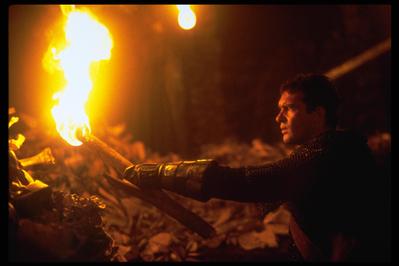
ANTONIO BANDERAS in THE THIRTEENTH WARRIOR
Conclusion: Reading Between the Lines (For Pleasure)
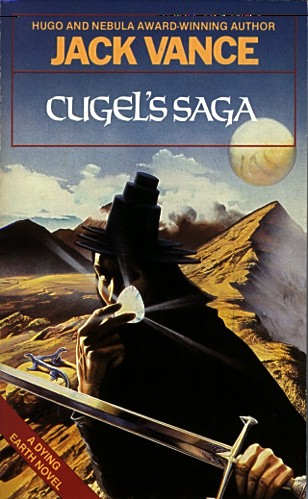

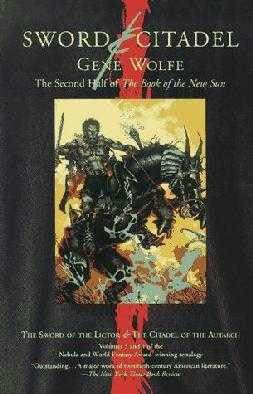
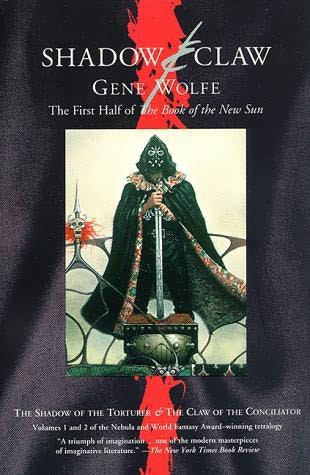
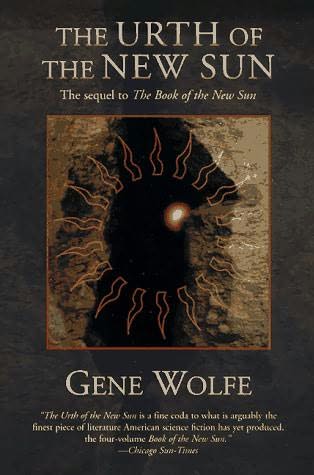
JACK VANCE & GENE WOLFE S&S BOOKS
Perhaps a bigger problem than vicious parodies and bad movies has been the unwillingness of publishers to expect more from S&S and even fantasy in general. The process of “genrification” which started in the 1960’s has finished, and S&S is now an established classification, with all the tenacity and evils that come with survival. Book stores now regularly carry fantasy books, often in their own section of the store. Fantasy has done well, but S&S still carries the derision of the last twenty years. The Jack Vances and Gene Wolfes are packaged without acknowledgement of their S&S heritage. With the exception of the new Conan pastiches, no books in your local store are promoted as S&S.
What this means is the S&S reader must go searching for their treasures in second hand stores or buy reprints from the Science Fiction Book Club. This guide is designed to help you in that search by listing authors, their works, alternative titles (marked with “a:”), comics and even movies. Happy hunting!
